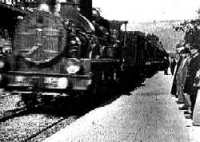Silent film
From The Art and Popular Culture Encyclopedia
(Difference between revisions)
| Revision as of 11:34, 18 August 2010 Jahsonic (Talk | contribs) ← Previous diff |
Revision as of 11:35, 18 August 2010 Jahsonic (Talk | contribs) Next diff → |
||
| Line 8: | Line 8: | ||
| In reality, 'silent films' were almost never silent, but always accompanied by some kind of music, mostly live accompaniment by live [[piano]]. For example the very young [[Dmitri Shostakovich]] helped to make ends meet by playing the piano in a movie house and later went on to compose [[film score]]s for many silent films, including his debut ''[[The New Babylon]]''. | In reality, 'silent films' were almost never silent, but always accompanied by some kind of music, mostly live accompaniment by live [[piano]]. For example the very young [[Dmitri Shostakovich]] helped to make ends meet by playing the piano in a movie house and later went on to compose [[film score]]s for many silent films, including his debut ''[[The New Babylon]]''. | ||
| ==See also== | ==See also== | ||
| + | ''[[Dr. Pyckle and Mr. Pryde]]'' | ||
| *[[Early horror films]] | *[[Early horror films]] | ||
| *[[Laurel and Hardy]] | *[[Laurel and Hardy]] | ||
Revision as of 11:35, 18 August 2010

L'arrivée d'un train en gare de La Ciotat (The Arrival of a Train at La Ciotat Station is an 1895 French short black-and-white silent documentary film directed and produced by Auguste and Louis Lumière. It was first screened on December 28 1895 in Paris, France, and was shown to a paying audience January 6 1896.
|
Related e |
|
Featured: |
A silent film is a motion picture with no accompanying, synchronized recorded sound, especially spoken dialogue.
The idea of combining motion pictures with recorded sound is nearly as old as the motion picture itself, but because of the technical challenges involved, most films were silent before the late 1920s.
In reality, 'silent films' were almost never silent, but always accompanied by some kind of music, mostly live accompaniment by live piano. For example the very young Dmitri Shostakovich helped to make ends meet by playing the piano in a movie house and later went on to compose film scores for many silent films, including his debut The New Babylon.
See also
Dr. Pyckle and Mr. Pryde
Unless indicated otherwise, the text in this article is either based on Wikipedia article "Silent film" or another language Wikipedia page thereof used under the terms of the GNU Free Documentation License; or on research by Jahsonic and friends. See Art and Popular Culture's copyright notice.

